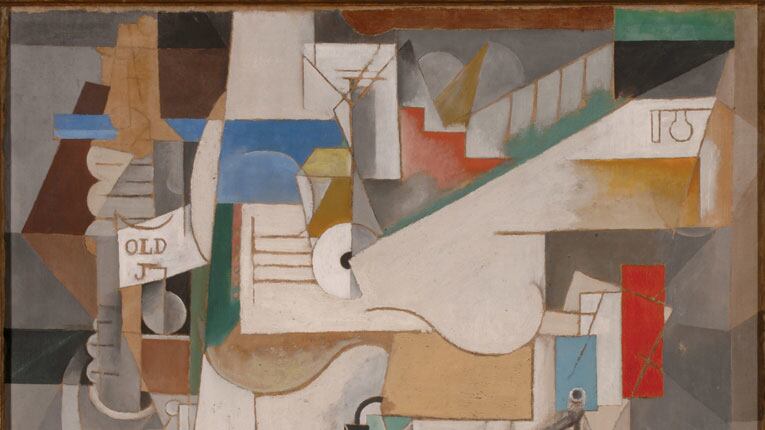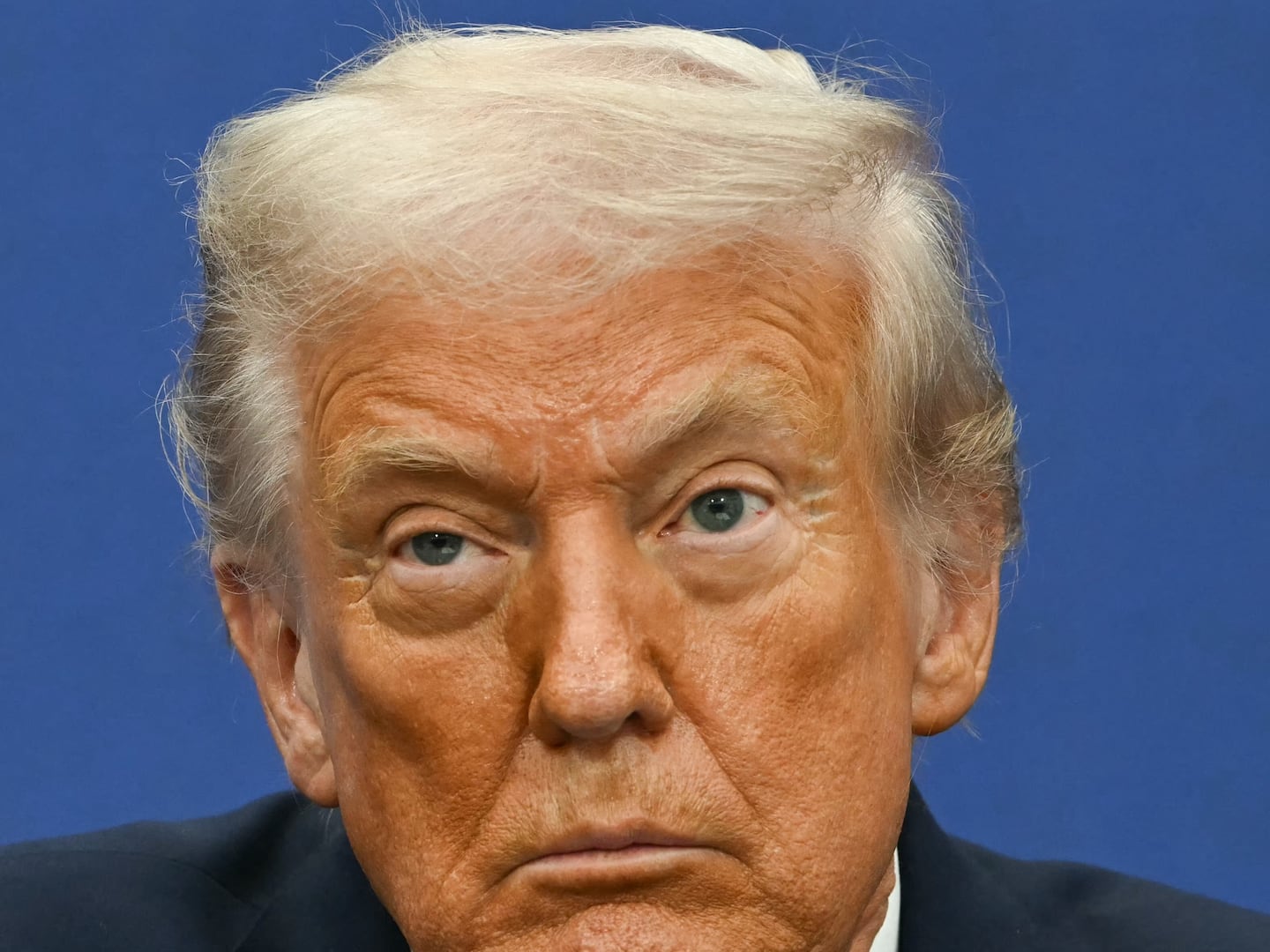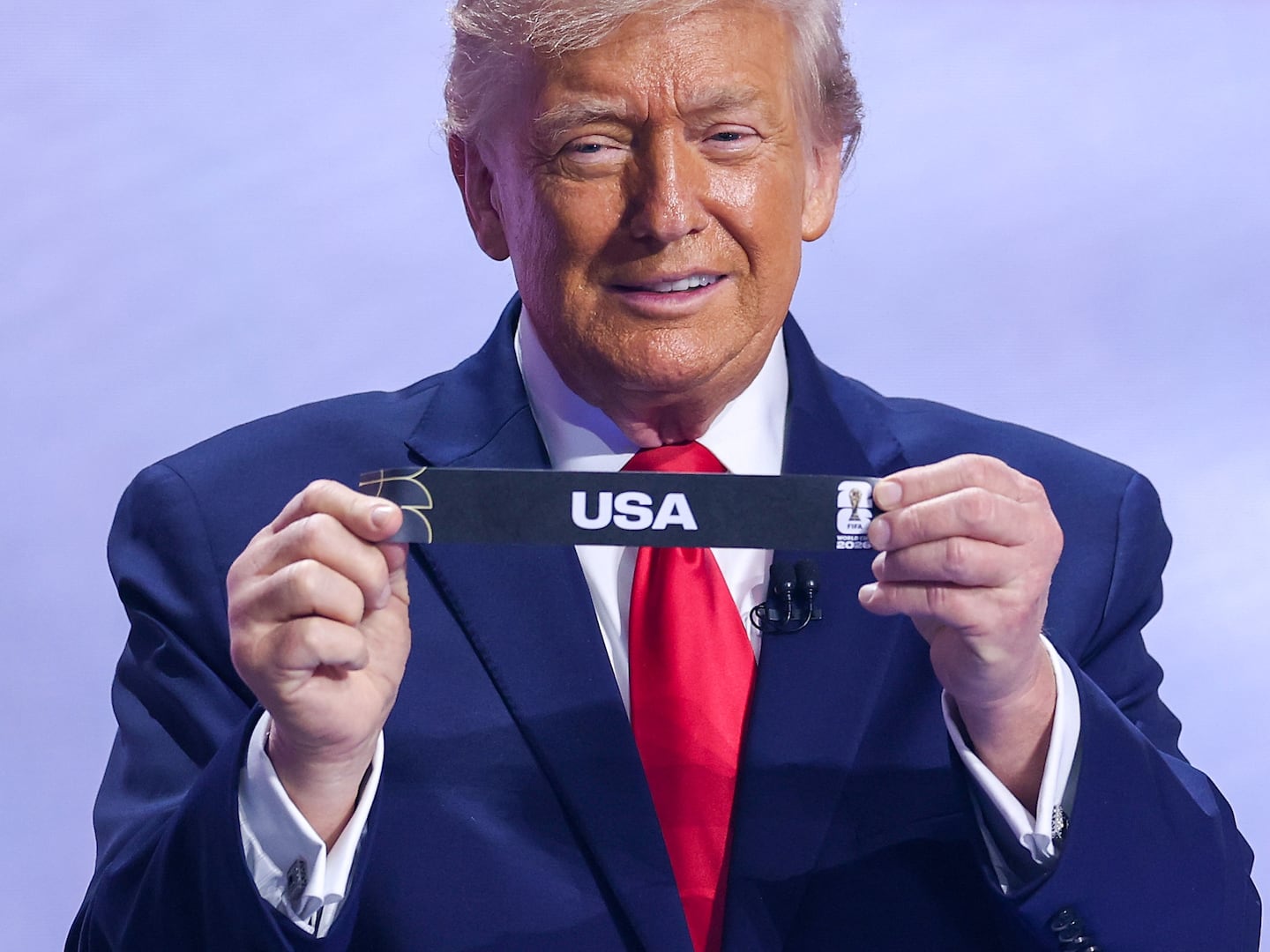
The guitar, held more closely to the body than almost any other instrument, helps collapse the distinction between figures and objects—a classic cubist goal. It also always invokes the person playing it, so that every picture titled Guitar could as easily be titled The Guitar Player—a figure who always also stands for the Spanish artist himself. (Nearly all Picasso's titles were made up long after the fact, by others, so they say almost nothing about a work's true subject.)
"Head of a Man" The Museum of Modern Art, New York. The Sidney and Harriet Janis Collection, 1967
A guitar comes preloaded with almost all the building blocks of art that Picasso wanted to mess with: straight lines, volumes and curves, surfaces of many colors and types. All guitars are born cubist, you could say. In Picasso's art, every guitar was almost begging to be pulled apart into its component parts of body, neck, strings, and tuning pegs. Sometimes you think you've spotted a guitar lurking even in a picture that isn't clearly of the instrument itself, which gives some idea of how protean an object it is, and how suited to the protean Picasso.
"Guitar" Nasjonalmuseet for Kunst, Arkitektur og Design, Oslo
Any of Picasso's pictures of Spanish guitars, painted and looked at in Paris, always count as a stand-in for Picasso himself, the Spanish artist who settled in Hispanophilic France. They let Picasso proclaim his Spanishness. They may also have helped him merge that Spanish identity into the French bohemia around him, since that was a culture that was also guitar-friendly. Early studio photos show Picasso flagging his native land by hanging an image of a bottle of Catalan anisette next to his great paper guitar—which was possibly the first sculpture ever made from separate elements, assembled. Questioned about what one of his guitar assemblages was—painting or sculpture (or junk)—Picasso proclaimed, "It's nothing, it's el guitare," casting a Spanish word into a French conversation. For a Spaniard, you could say that the guitar was the iconic tangible object—what it took to free Picasso from the miasmas of earlier cubism.
"Guitar" The Museum of Modern Art, New York. Nelson A. Rockefeller Bequest, 1979
If the whole guitar is like a drawerful of cubist art supplies, its strings are the most useful of all. Picasso used them to many different ends. The backbone of all Old Master realism had been the grid of parallel and converging lines that help define perspective. Guitar strings gave Picasso the chance to depict recurring parallel lines that have nothing to do with realism: He nods to the past while resisting it, too. A guitar's strings also have a wonderful rhyme with the musical notations their musician reads. That meant Picasso could deliberately confuse the strings on a guitar's neck with the lines on the musical staff that represent their notes, just as he liked to break down the distinction between pictures of things and their written-out names. In the very center of this collage, Picasso seems to glue a closeup on two strings and the space between—an equals sign that stands for his bridging of opposites.
"Musical Score and Guitar" Centre Pompidou, Musee National d'Art Moderne, Paris. Bequest of Georges Salles, 1967
The broad expanse of wood grain that is there in all guitars made them the perfect object to set into the old, wood-paneled rooms of bohemian Paris, circa 1912: Picasso could breed fertile confusion between a wood-grained space and the wooden instrument in it. As the great art historian T.J. Clark recently explored across an entire series of lectures, the sitting room became a kind of theater for much of what goes on in Picasso's art, so it is right that a Picassoid guitar should sit in its middle. (In this image from Scotland, note the rhyme between the valve on the gas jet and the tuning peg from the guitar.)
"Guitar, Gas Jet, and Bottle" Scottish National Gallery of Modern Art, Edinburgh. Purchased 1982
Playing the Spanish guitar demands the same huge range of virtuoso manual skills—fingering, plucking, strumming, knocking—that Picasso's art is about. Playing a guitar is like painting, drawing, collaging, and then combining all three. Guitar playing also has the intimacy felt in Picasso's art at this time. Picasso wasn't making grand public statements—he barely showed his work during these years—but instead was in an intimate, Segovia-like contact with his materials. Much of what he did was like a guitarist noodling in search of new melodies and effects. And yet, as with the guitar, Picasso's modest means yielded an extraordinary range of effects, from crashing chords to the quietest pizzicato.
"Head of a Man" Kunsthaus Zurich. Grafische Sammlung
The guitar, with its elegant "neck" and hourglass "waist," is almost a human figure already. Whenever Picasso painted a guitar, the picture of a body or face is nearby: The sound hole can be an eye or a mouth; the guitar's side can be a haunch or a breast. (Occasionally, there's the almost-explicit idea that the curvaceous guitar Picasso depicts is also the latest woman the artist is "playing.") Human bodies always trump other subjects for art; by painting bodily guitars, Picasso made sure to get extra attention from visitors.
"Bottle, Guitar, and Pipe" Museum Folkwang, Essen, Germany
A guitar gets built as a cubist image does: It is a space-filling object that is cobbled together out of separate surfaces. (One collage, held together only with dressmakers' pins, has survived 100 years.) Picasso's deconstructed guitars recall the clamped-together sheets of wood he would have seen in the famous guitar makers' shops of his native Málaga. This oval painting depicts its instrument via the sheet of waste wood its back would have been cut from.
"Guitar" Private Collection






